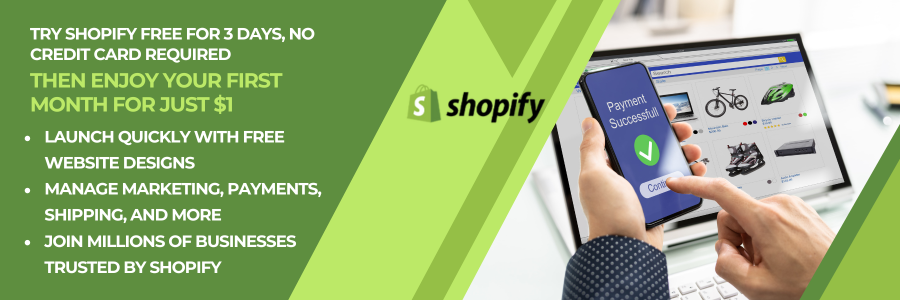As we enter 2024, the digital landscape continues to evolve, presenting new opportunities and challenges for content creators and marketers. I’ve noticed that distributing content effectively has become more crucial than ever in reaching target audiences and achieving marketing goals.

Content distribution channels are the pathways through which businesses share their content with their intended audience, ranging from social media platforms to email newsletters and beyond. My experience has shown that choosing the right channels can significantly impact a content strategy’s success.
I’ve found that effective content distribution in 2024 requires a multi-faceted approach. This includes leveraging social media platforms, optimizing for search engines, and utilizing email marketing campaigns. By diversifying distribution channels, I’ve seen businesses maximize their reach and engage with their audience more effectively.
The Evolution of Content Distribution
Content distribution has undergone significant changes in recent years. These shifts have been driven by changing consumer behaviors and rapid technological advancements.
Changing Consumer Behaviors
I’ve observed that consumers now expect personalized, on-demand content across multiple devices. This has led to a fragmentation of audiences across various platforms and channels. Social media has become a primary source of news and entertainment for many, with platforms like Instagram and TikTok gaining prominence.
Traditional TV viewership has declined as streaming services have risen in popularity. This shift has prompted content creators to adapt their distribution strategies to reach audiences where they spend most of their time.
User-generated content has also exploded, blurring the lines between creators and consumers. This democratization of content creation has forced brands to rethink their approach to distribution and engagement.
Technological Advancements Impact
I’ve seen how technological advancements have revolutionized content distribution. The widespread adoption of 5G networks has enabled faster, more reliable content delivery, particularly for high-bandwidth formats like 4K video and virtual reality experiences.
Artificial intelligence and machine learning algorithms have improved content recommendation systems, helping users discover relevant content more easily. This has led to increased personalization in content distribution strategies.
FAST (Free Ad-Supported Streaming TV) channels have emerged as a popular distribution model, combining traditional TV-like experiences with digital streaming capabilities. These channels offer new opportunities for content creators and advertisers alike.
Blockchain technology has also begun to impact content distribution, offering new ways to protect intellectual property and ensure fair compensation for creators.
Content Distribution Strategies
Content distribution strategies are crucial for maximizing the reach and impact of your content. I’ll explore three key approaches that can significantly boost your content’s visibility and engagement in 2024.
Multichannel Approach
I recommend adopting a multichannel approach to content distribution. This strategy involves spreading your content across various platforms to reach a wider audience.
Social media platforms like Facebook, Instagram, and LinkedIn are essential channels. I suggest tailoring your content to fit each platform’s unique format and audience preferences.
Email marketing remains a powerful distribution channel. I find that personalized newsletters can effectively deliver content directly to your audience’s inbox.
Paid advertising on search engines and social media can also amplify your content’s reach. I advise targeting specific demographics and interests to maximize your return on investment.
Content Repurposing
Content repurposing is a smart strategy to extend the life and reach of your content. I’ve found it to be particularly effective in 2024.
One approach is to transform blog posts into videos for YouTube or short clips for social media. This caters to different content consumption preferences.
Infographics can be created from data-heavy articles, making complex information more digestible and shareable. I often see these perform well on platforms like Pinterest and LinkedIn.
Podcasts can be transcribed into blog posts, and vice versa. This allows you to tap into both audio and text-based audiences with the same core content.
Influencer Collaboration
Collaborating with influencers can significantly boost your content’s visibility and credibility. I’ve observed this strategy gaining momentum in 2024.
Identify influencers whose audience aligns with your target market. I suggest focusing on micro-influencers, who often have higher engagement rates despite smaller followings.
Co-create content with influencers, such as joint webinars, podcasts, or blog posts. This approach leverages both parties’ expertise and audience reach.
Influencer takeovers on your social media accounts can introduce your brand to new audiences. I find this particularly effective on platforms like Instagram and TikTok.
Leveraging Social Media Platforms
Social media remains a powerful tool for content distribution in 2024. I’ve identified key trends in emerging networks, video content, and advertising models that can maximize your reach and engagement.
Emerging Social Networks
New social platforms are gaining traction, offering fresh opportunities for content distribution. I’ve noticed TikTok’s continued growth, now appealing to a wider demographic beyond Gen Z. BeReal has carved out a niche for authentic, unfiltered content. Clubhouse, despite initial hype, has found a steady audience for audio discussions.
I recommend experimenting with these platforms to reach new audiences. TikTok’s algorithm favors creative, entertaining short-form videos. BeReal’s daily photo prompts can showcase your brand’s human side. Clubhouse allows for deeper conversations with industry peers and potential customers.
Video Content Dominance
Video content remains king across social media in 2024. I’ve observed the rise of vertical video formats, popularized by TikTok and Instagram Reels. YouTube Shorts has also gained significant traction.
Live streaming continues to grow, with platforms like Twitch expanding beyond gaming. I suggest incorporating these video formats into your strategy:
- Short-form vertical videos (15-60 seconds)
- Live Q&A sessions or product demonstrations
- Behind-the-scenes content to build authenticity
Consistency is key. I recommend creating a regular posting schedule to keep your audience engaged and capitalize on platform algorithms.
Paid Advertising Models
Social media advertising has evolved, offering more targeted and interactive options. I’ve seen a shift towards performance-based advertising, where businesses pay for specific actions rather than just impressions.
Instagram and TikTok have expanded their shopping features, allowing for seamless in-app purchases. I suggest exploring these options to create a frictionless buying experience for your audience.
Micro-influencer partnerships have become more prevalent. These collaborations often yield higher engagement rates than traditional celebrity endorsements. I recommend identifying influencers whose followers align closely with your target audience for maximum impact.
Email and Direct Messaging
Email and direct messaging remain powerful content distribution channels in 2024. I’ve found these methods offer personalized communication and allow for targeted outreach to specific audience segments.
Subscription Models
Email subscription models have evolved to provide more value to subscribers. I’ve seen companies offering tiered subscription options, giving readers choice in content frequency and depth. Some businesses now use AI to tailor content recommendations based on subscriber interests and behavior.
Webinars and online events have become popular additions to email subscriptions. These interactive sessions allow real-time engagement and knowledge sharing.
I’ve noticed an increase in micro-newsletters, focusing on niche topics to serve specialized audiences. This trend caters to readers seeking in-depth information in specific areas.
Automation and Personalization
Automation has revolutionized email marketing and direct messaging. I use tools that trigger personalized messages based on user actions or milestones.
Email marketing generates a high ROI, averaging $42 for every $1 spent. This efficiency is largely due to advanced automation and personalization techniques.
Dynamic content insertion allows me to customize email bodies based on subscriber data. This might include tailored product recommendations or location-specific information.
A/B testing has become more sophisticated. I can now test multiple elements simultaneously, optimizing subject lines, send times, and content for maximum engagement.
Analyzing and Measuring Success

Tracking content distribution effectiveness requires a data-driven approach and focus on key engagement metrics. I’ll explore how to make informed decisions and measure audience interactions to optimize your strategy.
Data-Driven Decisions
I rely on analytics tools to gather crucial data about my content’s performance across distribution channels. I use Google Analytics to track website traffic and user behavior. For social media, I utilize platform-specific analytics like Facebook Insights or Twitter Analytics.
I pay close attention to:
• Traffic sources
• Time spent on page
• Bounce rates
• Conversion rates
By analyzing these metrics, I can identify which channels drive the most valuable traffic. This helps me allocate resources more effectively and refine my content distribution strategy.
I also use A/B testing to compare different content formats, headlines, or distribution times. This allows me to optimize my approach based on real data rather than assumptions.
Engagement Metrics
I focus on specific engagement metrics to gauge how well my content resonates with the audience. Key indicators I monitor include:
• Likes, shares, and comments on social media
• Email open and click-through rates
• Video view duration and completion rates
• Webinar attendance and participation
These metrics provide insights into audience interest and content quality. High engagement often correlates with increased brand awareness and customer loyalty.
I use tools like BuzzSumo to track content shares across platforms. This helps me understand which topics and formats generate the most interest. I also monitor mentions and sentiment analysis to gauge overall brand perception.
By consistently analyzing these engagement metrics, I can identify trends and adjust my content strategy accordingly. This ensures I’m creating and distributing content that truly resonates with my target audience.








Comments (896)